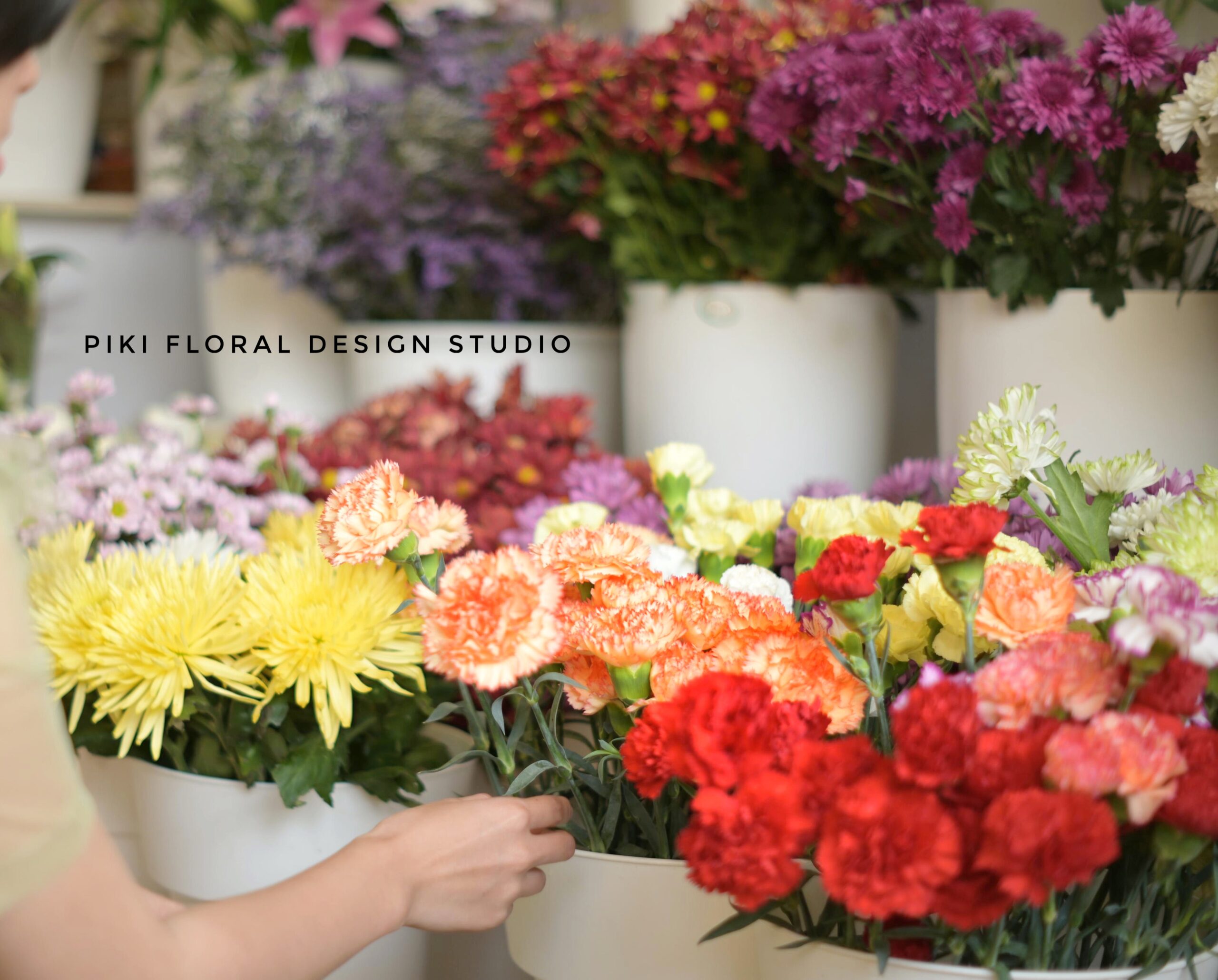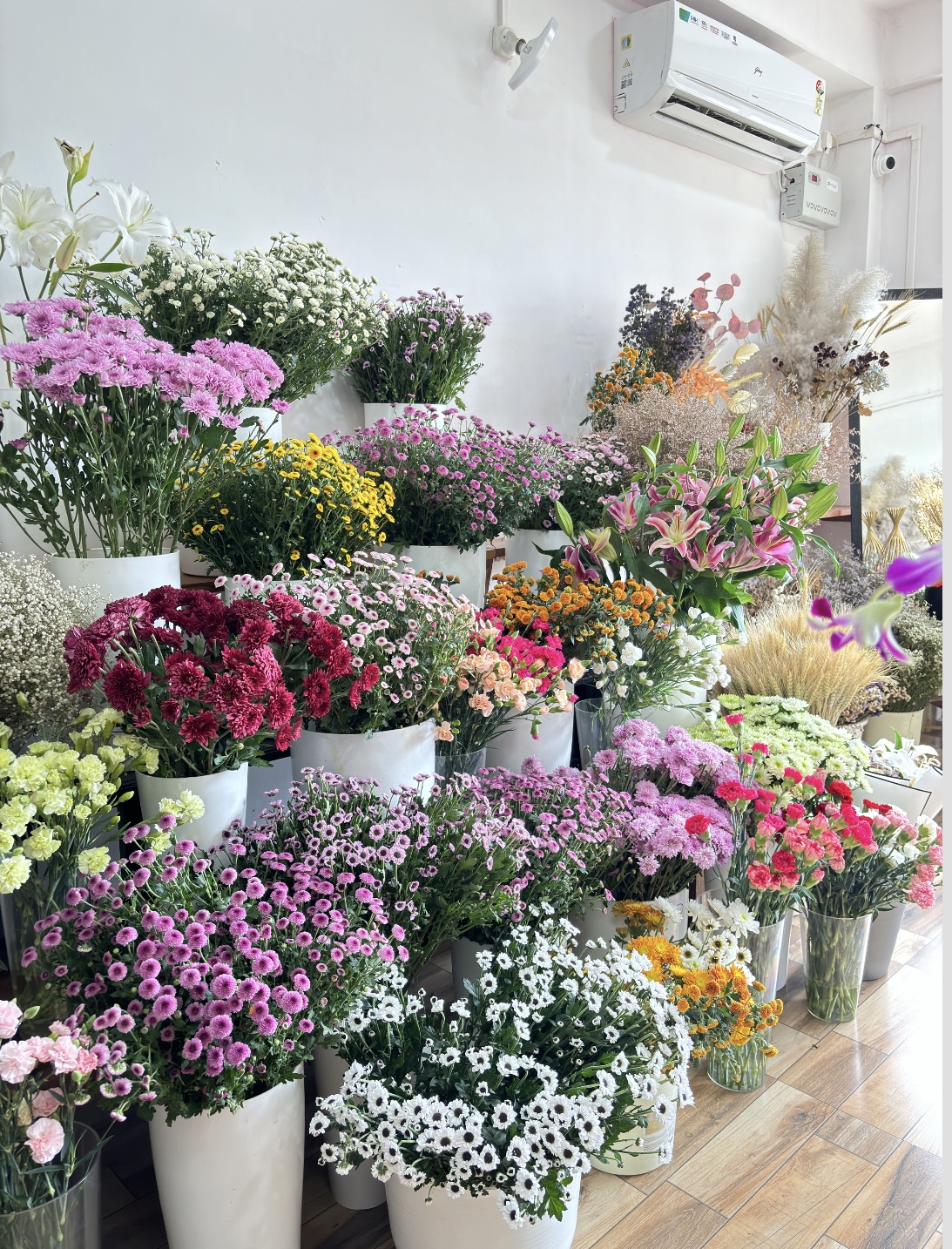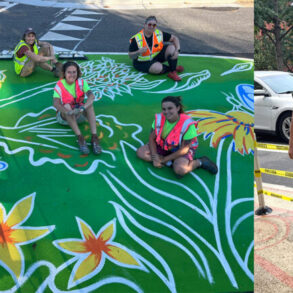
- Kili G Zhimo
- DIMAPUR — 28-year-old
Kili G Zhimo’s journey into floristry is a reflection of the interconnectedness
she sees between her family, her spiritual path, and her love for art. - A former student of AG Higher Secondary School and SD Jain
Girls College in Dimapur, she later earned a Bachelor of Divinity from Trinity
Theological College and went on to establish Piki Floral Design Studio at Purana
Bazaar in Dimapur. - The foundation of her floral business was laid by the quiet
influence of her upbringing—especially her parents’ deep appreciation for
flowers. After the passing of her father, discovering his diary filled with
reflections on the symbolic meanings of flowers became a turning point,
inspiring the heart and purpose behind her venture. - Guided by faith and a desire to build something meaningful
from the ground up, she set out to create a workspace where spirituality and
creativity are closely aligned. Whether painting with brushes or crafting
floral arrangements by hand, she believes it is the artistic mind that connects
both worlds.
Also read: Crafting career by blending taste and entrepreneurship
- In this interview with Eastern Mirror, Kili shares how
floristry combines art, commerce, and care; the challenges and opportunities in
Nagaland’s floral industry; and why building with intention is at the core of
her work. - How would you describe floristry to someone who might not be
familiar with it? - Floristry is the art of curating floral arrangements for
various occasions. It is a creative venture where emotions are expressed
through blooms. It also involves the caring for and handling of flowers. In
short, it is a blend of artistry, science, and commerce. - Are there any specific educational paths or courses
recommended for aspiring florists in Nagaland and beyond? - Those who aspire to become floral designers can take various
courses to develop their skills. To learn the basics, one can attend workshops
tailored to the specific skills they wish to acquire, which we also offer at
our studio. - Can you talk about the different specialisations within
floristry (e.g., event décor, retail arrangements, wedding florals)? - Floristry is a very vast and diverse field, some aspects of
which include floral design, which emphasises the creative and artistic aspects
of floristry; on the other hand, event florists cater to larger displays and
installations. Retail florists manage and work in a flower shop, which
primarily involves selling cut flowers, inventory management, customer service,
and handling special orders, whereas a skilled floral designer is an expert in
wedding florals who understands the individual aesthetics of the clients and
curates designs that reflect their own unique style. 
- Freshly cut flowers at the
studio.
- Freshly cut flowers at the
- How important is understanding local flora and the cultural
context in a place like Nagaland? - Understanding our own local flora and the cultural context
is very crucial. Understanding the traditions of our own indigenous community
fosters a more meaningful engagement promoting and preserving an ecological
balance. - What role does creativity play in floristry, and how can
students nurture their creative side? - Creativity allows one to adapt to different styles and
trends, enabling one to work with diverse materials, which allows one to
explore expressive design and develop a personal artistic voice. Students can
nurture their creative side by exploring inspiration from nature and art and
through learning the different principles involved in design. - Are there any particular challenges florists face in
Nagaland, such as climate or accessibility to certain flowers? - Yes, seasonality greatly impacts flower choice and
availability, as certain flowers only bloom during specific times of the year,
affecting both cost and freshness. - Do you think formal training is necessary, or can students
learn floristry through apprenticeships and hands-on experience? - Formal training not only enhances one’s credentials but also
provides a strong foundation in essential skills. However, one can also learn
through apprenticeship. With passion and a genuine love for creativity and
exploration, a student can master the art along the way. - Can you share some essential steps for someone who wants to
start a small flower business? - To start a small flower business, it’s essential to define
your niche—whether it’s fresh bouquets, event floristry, or another speciality.
Understanding the needs of the market is crucial. Strong communication skills,
a genuine passion for flowers, the ability to take risks, and the resilience to
work under pressure are all vital qualities. By combining these skills and
attributes, one can confidently navigate challenges and thrive in the industry. - What are some key trends in floristry that young people
should pay attention to? - Young people starting out in floristry should keep an eye on
important trends. These include using eco-friendly methods like avoiding floral
foam, choosing local flowers, and reusing containers. Many customers now prefer
wild, natural-looking arrangements with uneven shapes, as well as dried and
preserved flowers that last longer and are better for the environment. Bright
and bold colours are becoming more popular. All these changes show that modern
floristry is moving toward being more creative, sustainable, and focused on
unique experiences. - How does seasonality affect flower choice and availability,
and how can students manage that? What business skills, besides floral design,
should students learn if they aim to run a floristry venture? 
- Staff at Piki Floral Design
Studio: florist Livika Chishi (right) and assistant florist Avili Chishi
(left).
- Staff at Piki Floral Design
- Seasonality plays a significant role in flower selection and
availability, as many blooms are only in season during certain times of the
year, which affects both pricing and freshness. - Students can manage this by planning their designs around
locally available, in-season flowers. They can also use cost-effective
alternatives that have similar colours or shapes, incorporate seasonal greenery
and dried elements, and source materials from nearby farms or markets. This
approach not only lowers costs but also results in fresher, longer-lasting
arrangements. - Besides floral design, students who want to run a floristry
business should learn some basic business skills. These include how to promote
their work through marketing and social media, how to talk to customers and
handle requests or complaints, and how to manage money by setting prices and
tracking expenses. It’s also important to learn how to organise supplies, keep
things on schedule, and solve problems when things don’t go as planned. Good
communication, time management, and building strong relationships with other
professionals can really help a flower business grow. - What common misconceptions do people have about floristry
that you’d like to clear up? - A common misconception about floristry is that it’s just
about arranging pretty flowers, when in reality it involves a mix of artistic
skill, physical labour, and business management. Many people overlook the early
mornings, time-sensitive work, and behind-the-scenes tasks like sourcing,
prepping, transporting, and maintaining flowers, as well as dealing with
clients, deadlines, and fluctuating costs. It’s both a creative and demanding
profession. - How does collaborating with other creative fields, like photography
or interior design, benefit a florist? - Collaborating with other creative fields like photography or
interior design benefits a florist by expanding the network, enhancing the
portfolio, and opening up new opportunities for exposure. Working with photographers
can result in high-quality images that showcase the work. Floral work in styled
shoots or events, while partnering with interior designers, can lead to
recurring projects like home staging or commercial installations. These
collaborations can also inspire fresh ideas and encourage creative growth. - How do you see the future of floristry, both in Nagaland and
globally? - The future of floristry, both globally and in Nagaland, is
shaped by sustainability, technology, and personal touches. Around the world,
florists are using eco-friendly methods, digital tools, and offering custom
designs and subscriptions. In Nagaland, floriculture is growing fast, boosting
the economy and supporting women in rural areas. Both are moving toward a more
creative, eco-conscious, and community-focused industry. - What parting advice would you give to young readers who are
considering floristry as a career? - For young readers considering floristry as a career,
remember that it’s not just about arranging flowers—it’s about combining
creativity, business acumen, and hard work. Be prepared to learn the technical
skills of floristry but also develop strong business, marketing, and customer
service abilities. - Stay curious, keep experimenting with new ideas, and never
underestimate the value of networking and collaboration. The floristry industry
is evolving with trends in sustainability and technology, so be adaptable and
always seek opportunities to grow. Most importantly, if you’re passionate about
flowers and helping others create beautiful moments, this career can be both
fulfilling and rewarding. 
- Freshly cut flowers at the
studio.
- Freshly cut flowers at the
- RAPID INSIGHTS
- What’s your favourite flower and why?
- Orchids, because they are rare, and despite their delicate
appearance, orchids are known for their resilience and ability to thrive in
various environments, symbolising strength and endurance. - What’s the first thing you notice when you walk into a
garden? - The hard work.
- What’s one thing on your bucket list you still hope to
achieve? - One thing on my bucket list is to create an open studio
space that combines art and high-end floral design—a place to explore, exhibit,
and represent creative work while connecting with like-minded artists and
visionaries. I hope it becomes a hub for inspiration, collaboration, and
meaningful expression in the future.
This post was originally published on this site be sure to check out more of their content








